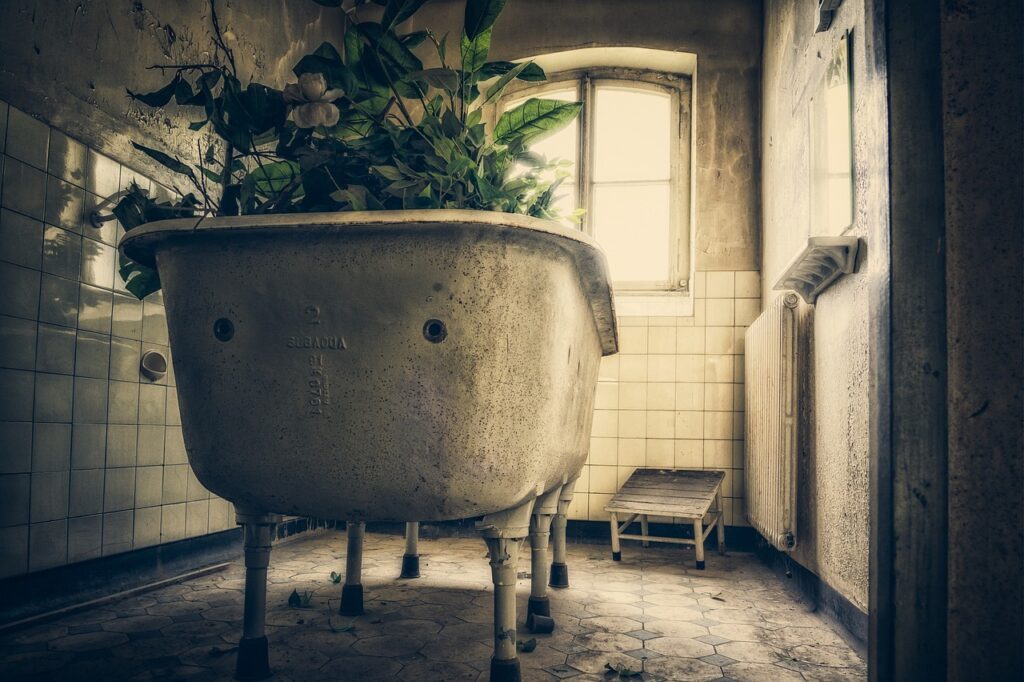Have you ever found yourself standing in your bathroom, looking at your worn-out tub and asking, “Can I replace a bathtub by myself?” This thought-provoking article attempts to answer this question, providing a thorough investigation into the process and necessary skills required for a DIY bathtub replacement. Laying out the potential pitfalls, advantages, and step-by-step instructions, the article highlights the complexity involved but also brings to light the need for professional services to help ease the process and to ensure safety and correctness in the task.
Understanding the Scope of the Project
Before diving into replacing your bathtub, there is a need to clearly outline what this project will involve to fully understand the scope of the task ahead. This will give you a more precise idea of what the project might entail.
Overview of what bathtub replacement involves
Bathtub replacement is a multi-faceted project that involves more than just swapping out an old tub for a new one. The process involves three main aspects – removal of the old tub, preparation of the area for the new tub, and the installation of the new tub. In addition to this, there are aspects of plumbing, carpentry, and project management to consider.
Identifying the complexity of the project
The complexity of the bathtub replacement project depends largely on the size of the bathtub, its current state, its location, and the state of the surrounding area plus any plumbing and carpentry work. Additionally, unexpected challenges like rusted pipes and corroded connectors may add to the complexity.
Estimating time and effort required
Time and effort required to replace a bathtub by yourself vary greatly depending on the size and type of the bathtub, your DIY skill levels, the tools available, and other factors. A straightforward replacement could take a couple of days, but unforeseen issues can lengthen this timeframe.
Assessing One’s Skills and Tools
Before proceeding with your bathtub replacement project, it’s important to honestly assess your competencies in plumbing and carpentry, as well as ensuring you’ve got the right tools for the job.
Assessing your plumbing and carpentry skills
While some aspects of bathtub replacement are quite straightforward, many components require advanced skills. Can you safely shut off and disconnect the water supply and waste lines? And how comfortable are you with carpentry work?
Identifying whether you have the right tools for the job
Aside from the right skills, do you have the appropriate tools? A bathtub replacement project might require tools like a claw hammer, pry bar, utility knife, screwdriver, and a level, amongst others.
Understanding the risks involved in self-installation
While taking the DIY route can be enticing, it’s crucial to understand the risks involved. A minor mistake in installation or a missed step in sealing or waterproofing can lead to serious water leakage which can cause expensive damage to your home.
The Stages of Bathtub Replacement
Successful bathtub replacement comes down to three key phases – removal, preparation, and installation.
Removal of the old bathtub
Removing the old bathtub may seem easy, but requires careful attention to detail. Disconnecting the plumbing should be done carefully to avoid damaging the existing pipes, and the bathtub itself should be removed gently to avoid damaging the surrounding areas.
Preparation of the area for new bathtub
Once the old bathtub is removed, the area needs to be cleaned and prepped for the new bathtub. This includes taking care of any needed repairs, ensuring all surfaces are clean and dry, and possibly applying a layer of waterproof sealant.
Installation of the new bathtub
After preparation, the last phase involves the actual installation of the new bathtub. This entails accurately aligning the tub, ensuring it’s level, and then securing it in place before making all the necessary plumbing connections.
Removing the Old Bathtub
Before your new bathtub can be installed, the old one must be thoroughly removed.
Disassembly instructions for different bathtub types
Procedure for removing the bathtub largely depends on the type of bathtub you have – alcove, freestanding, or fitted. Each type has a slightly different approach when it comes to their removal.
Protocol for handling plumbing connections
Proper protocol for handling plumbing during bathtub removal is essential. Firstly, ensure you’ve correctly shut off the water supply. Secondly, carefully disconnect the existing plumbing fixtures and be mindful of any potential water build-up that could be released.
Dealing with potential issues like rusted pipes or corroded connectors
Over time, problems such as corroded pipes or connectors and rusted fixtures can occur. Dealing with these issues can be difficult and messy. Corroded connectors might need cutting or scraping, which could potentially damage the pipes.

Preparing the Area
Preparation of the area where the new tub will be installed is just as important as any other part of the replacement process.
Steps to clean and prepare the surface
The area where the bathtub sits must be thoroughly cleaned and dried to ensure a proper installation. This involves removing any old adhesive or caulking that could interfere with the installation process.
Protocols for sealing and waterproofing
Sealing around the area where the bathtub will meet the wall and floor is key to preventing any water from seeping into your home. A water and moisture barrier also needs to be put into place as an additional layer of protection.
Preparation of the plumbing area for the new bathtub
The existing plumbing may also need some adaptation to fit the new bathtub, or may just simply need a thorough cleaning. You may also need to install new fixtures like a drain or overflow valve.
Choosing a New Bathtub
Selecting the right bathtub for your space can be both exciting and challenging.
Considerations when choosing a new bathtub
Factors that should be considered include the size and style of the bathtub, your budget, the material of the bathtub, and comfort.
Understanding the differences between materials
Bathtub materials range from acrylic, enamelled steel, cast iron, to fibreglass. Each material has its pros and cons in terms of durability, maintenance requirements, aesthetic appeal, and cost.
Tips for ensuring the new bathtub fits your space and plumbing setup
Before making a purchase, check the specs of the bathtub against the dimensions of your space. Ensure that the bathtub will fit on the platform or alcove with enough space remaining for the required fixtures. The location of the drain should also match your existing plumbing setup.

Installing the New Bathtub
After selecting your brand-new bathtub and preparing the area, it’s time to embark on the installation process.
Detailed steps for a standard bathtub installation
The steps involved in tub installation include firstly setting the new bathtub in place, ensuring it’s level, then securing it to the wall studs. Once done, test to ensure the drain fits securely and all your connections are correct before filling the tub with water for a final leak test.
Tips for securing and sealing the bathtub
Securing the tub usually involves the use of screws or brackets. It’s important here to be mindful not to cause any cracks or breaks in the tub’s material. Also, a bead of caulk along the rim of the tub is essential to preventing leaks.
Instructions for connecting the plumbing
Connecting the plumbing is the most vital part of the job. You’ll need to properly align the tap, drain, and overflow valve and seal each connection securely. If you are installing a whirlpool bathtub, also reconnect the motor and test it to ensure functionality.
The Time and Costs Involved
Time and costs are important considerations for anyone planning a DIY bathtub replacement.
Estimation of time required to replace a bathtub on your own
Bathtub replacement for an average handy person is typically a weekend project, however depending on the scope of work involved and your comfort level with such projects, this could extend for several days.
Potential costs for tools or unexpected issues
Bear in mind that costs can add up quickly, you may need to buy or rent specific tools and there may be unexpected issues or parts that need to be replaced. It is smart to budget for unforeseen expenses to avoid any unpleasant surprises along the way.
Comparison of DIY versus hiring professionals in terms of time and money
On the face of it, doing it yourself can seem like a cost-effective move. However, once you factor in the time investment and potential errors or issues, hiring a professional may offer a better return on investment.
Benefits of Hiring Professional Services
Using a professional service for bathtub replacement offers several advantages over going it alone.
Efficiency and expertise of professionals
Professional bathtub installers bring a wealth of knowledge and experience to the task, ensuring the job is done right. They also often have specialized tools and equipment that make the job more efficient.
Guarantee of quality
With professional installation, you are more likely to get a quality finished result. Professionals have the expertise to handle unforeseen issues and avoid common pitfalls, and also often provide a guarantee on their work.
Responsibility for potential problems or unforeseen complications
Professionals take responsibility for resolving any complications that arise during the project and will work closely with you to ensure you are happy with the final result.
Our Bathtub Resurfacing Services
Allow me to introduce you to our professional services at this point.
Overview of our bathtub resurfacing service
Our team offers comprehensive bathtub resurfacing services that restore life back into your existing bathtub. We make sure your old tub not only looks brand-new but also functions perfectly.
How our professional services can save time and effort
Opting for our bathtub resurfacing service can save you the time and hassle of replacing your bathtub completely. Our team is skilled at restoring bathtubs to their former glory, meaning you won’t have to deal with removal, installation, and the mess that comes with it.
Contact information and next steps for interested customers
If our services sound like just what you need for your bathtub revamp, do not hesitate to reach out to us. We are always available and eager to help our customers elevate their homes. Reach out to us via our contact details provided below and let’s get your bathtub looking brand new!
